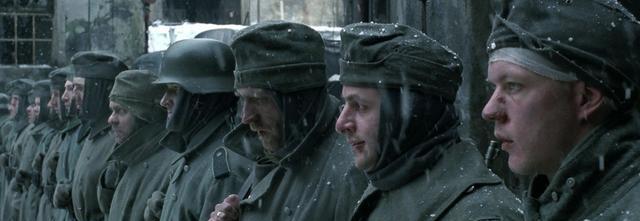I believe that many friends will not be unfamiliar with the battle mentioned in the title, and it has left a profound mark in the history of modern wars with blood and tragedy.
According to relevant information, the number of casualties on both sides exceeded two million. Behind this figure is the determination and madness of decision-makers. At the height of the war, Stalin ordered the retreating soldiers to be shot to ensure that the region would not be lost.

The German side was also crazy, in the early stages they had always been dominant, and had taken nearly eighty percent of the land in this area, so they naturally did not spit out the meat to the mouth easily. If it weren't for the delay until the winter, it is really difficult to say who would win in the end.
Later, after the German army surrendered, because the mood on the battlefield was not completely dissipated, the Soviet army had a very bad attitude towards them. They were also treated miserably in prisoner-of-war camps. I will then introduce you to the post-war situation of German prisoners of war in stages.
The first period, the period of the temporary prisoner-of-war camp
In February 1943, with the capture of the German commander Paulus, the Battle of Stalingrad ended in a Soviet victory. The newly promoted German commander led the remaining 90,000 men toward the makeshift prisoner-of-war camp provided for them by the Soviets in cold conditions.
But because of the long fighting, there were no decent buildings on the street, so the more than 90,000 prisoners of war were placed in the tunnels dug during the previous battle. At the same time, it is also a "hospital" specially set up for them.
When everyone was lying in this tunnel, it was impossible to see that it was a temporary hospital. Leaving aside the environment, because many people have been injured in previous battles, but there are almost no drugs that can be used in this hospital.
At that time, the situation was like this, the medical resources were already tight, all of them were given to the Soviet soldiers fighting on the front line, how could this group of prisoners whose lives were thinner than paper be given how much medicine?
As a result, many PRISONERs died of wound infections and severe pain during surgery. In addition to medicine, water and food are not guaranteed.
The water was dirty and polluted, and food could only be exchanged for belongings and the soldiers guarding them. According to relevant records, their daily food supply is only an average of ten people with a black bread and a little soup. In this extreme environment, the German army had a high mortality rate. But compared with what happened later, maybe it's not that bad.
In the second period, on the way to the final place of detention
After a month in this environment, they were finally able to leave the ghost place, and they were to be sent to the final place of detention in the east, the Siberian prisoner camp. It was a "long march" for prisoners of war.
The analogy is so because this time the transfer was arduous, with harsh environments in the front and Soviet soldiers in the back. In mid-March 1943, the prisoners of war began to be transferred.
At this time, most of them are no longer in human form, and after a month of life without eating, drinking, and without treatment, many of them are not in good health. But after they hit the road, the Soviets behind them kept urging them to move forward quickly, and if they fell behind, or if they fell ill on the road and affected the overall speed of progress, they would be shot.
Once encountered other Soviet troops on the road, because of hatred they also shot at the group of prisoners. By the time we reached Siberia, the 90,000 who had surrendered had now become 30,000.
The rest of them will also face labor reform, heavy physical labor in siberia in an environment of minus tens of degrees, and they will become ill due to water and soil incompatibility, and the direct consequence of illness is death. So by the end of the war, only a few thousand of the original tens of thousands of prisoners of war remained.
The third period, the period of post-war repatriation
At this time, these prisoners of war are really surviving. However, only five thousand people have been tempered layer by layer. In 1955, for international reasons, the men were able to return home, and the remaining five thousand finally returned to Germany. That's the end of it.
Finally, I would like to express my personal opinion, this group of Germans was originally the identity of the invaders, but after being captured, they seemed to have exchanged identities with the enemy on the battlefield. The Soviets became the perpetrators, they became the victims. In the final analysis, it is the fault of the war, it is the war that provokes the hatred of the two peoples, and in the end it is the loser who bears all the consequences. I think perhaps it is most appropriate to describe these prisoners of war in an old Chinese saying: there must be something to hate about poor people.